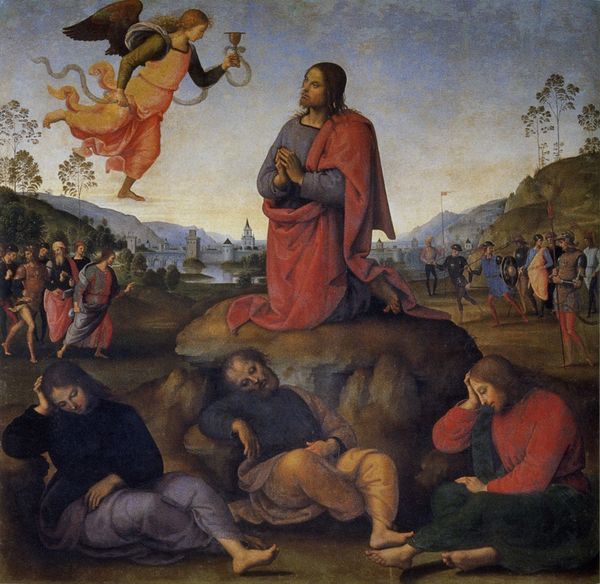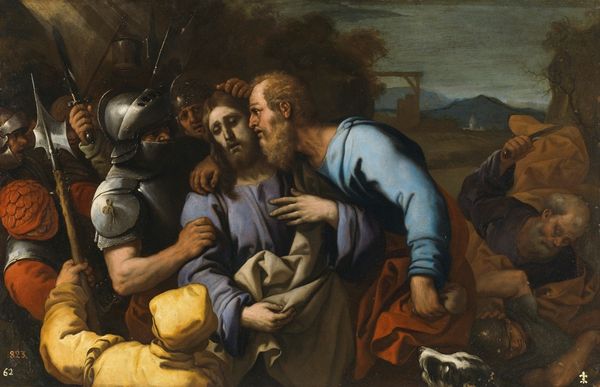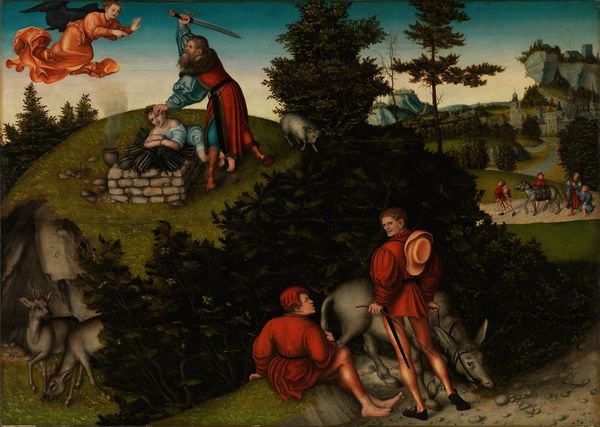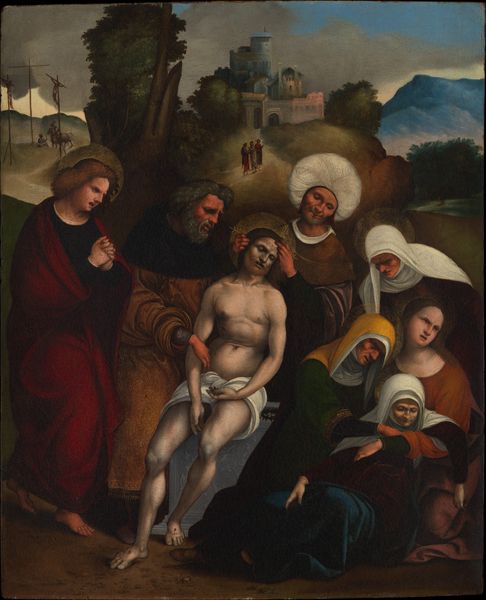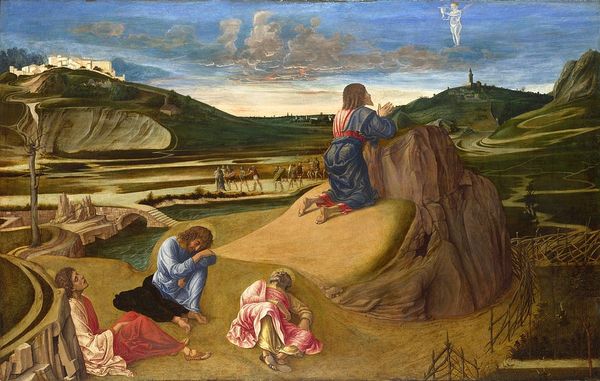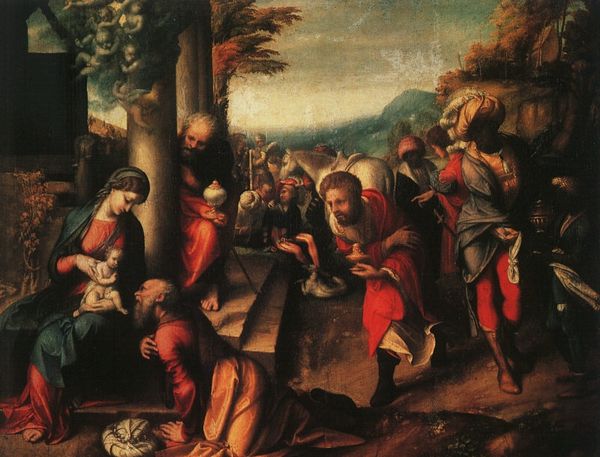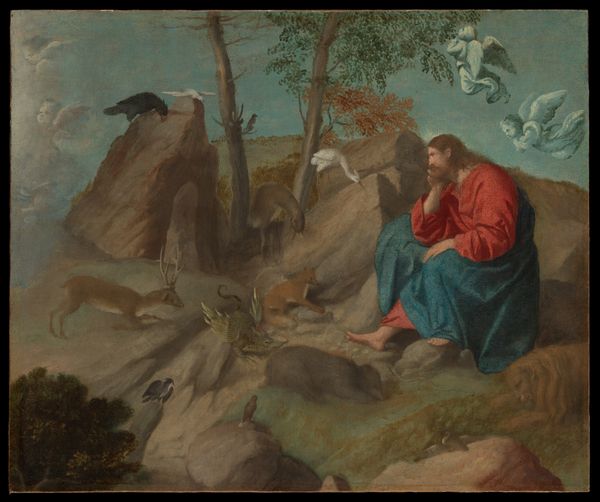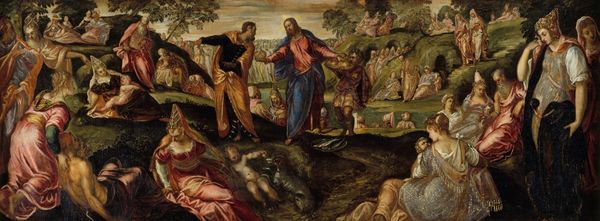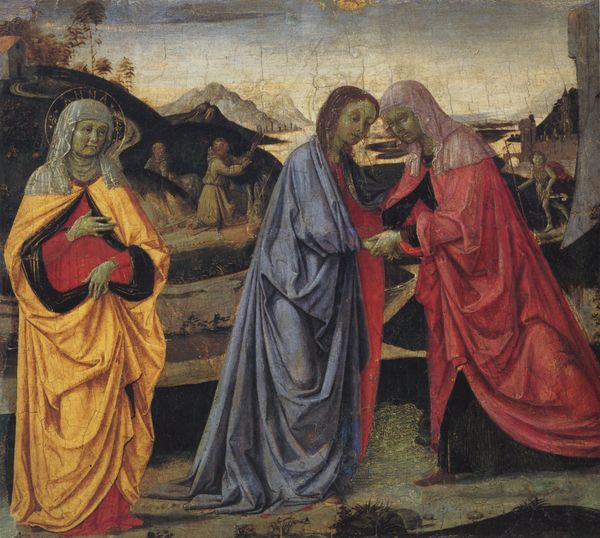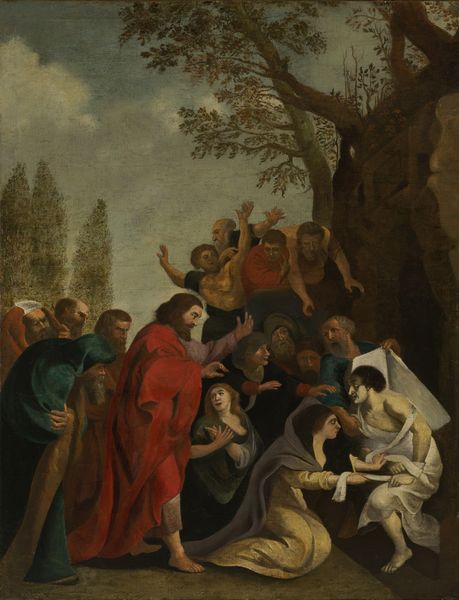
painting, oil-paint
#
portrait
#
narrative-art
#
painting
#
oil-paint
#
landscape
#
figuration
#
oil painting
#
history-painting
#
italian-renaissance
#
early-renaissance
Copyright: Public Domain: Artvee
Curator: I find the delicate handling of light fascinating in Raphael’s “The Agony in the Garden” from circa 1504. The oil paint gives a luminosity to the figures that softens the intensity of the scene. What are your first impressions? Editor: The figures are huddled and somewhat lost in the landscape. It's a somber work; the coloration is muted and creates a pervasive sense of melancholy. A tension exists between foregrounded subjects and expansive landscape. Curator: Indeed. Notice how the placement of the figures invites the viewer into Christ's emotional landscape. The three disciples, slumped and asleep, act as emotional anchors, weighing down the scene with their unconsciousness. Christ's solitude is further emphasized by this symbolic sleep. Editor: It is interesting to observe the use of the triangular composition and its relation to formal harmony and balance—it certainly provides a structural order and highlights central and symmetrical qualities, despite the narrative of despair. Is the angel intended as a beacon of hope in the face of such suffering, offering him salvation? Curator: The angel is more than just a bearer of hope, and more of a divine messenger, and carries the chalice. It is not salvation the angel offers, but acceptance of God's will—signifying his impending sacrifice for humanity's sake. This scene is laden with traditional symbolism and offers an enduring reflection of faith. Editor: Thinking about the symbolic intent—would this work suggest that in times of struggle, acceptance, or surrender, can offer solace, in absence of action? Or rather that acceptance is the first step of action, which will lead to freedom? Curator: That's a keen observation. The narrative's power rests not just in the depiction of suffering, but the complex psychology that unfolds. The painting functions as a reflection on human vulnerability. Editor: Thanks for guiding us to further insights. Viewing this composition through its cultural memory highlights the resonance of enduring artistic languages. Curator: Indeed, and a poignant one it is.
Comments
No comments
Be the first to comment and join the conversation on the ultimate creative platform.
